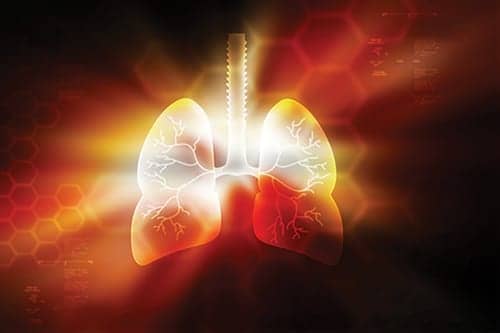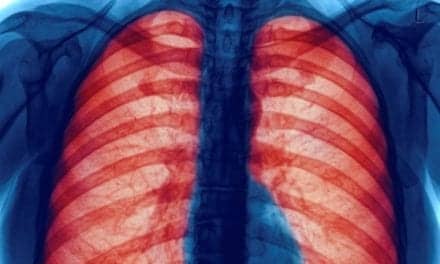Recently, patient monitoring technology was outfit into a newly released airway clearance vest in order to connect at home therapy and clinical assessment. But is this device an outlier or the start of a new trend?
Already a ubiquitous presence in everyday life, technology is slowly creeping into the medical world. The potential benefits of wireless connectivity have led to its integration into hospital networks and clinics; medical device manufacturers are also testing the tech waters and creating devices that deliver better patient care.
Hill-Rom is one such company that launched, on a limited basis in May, its VisiVest System, which connects the patient wirelessly to a central hub where both patient and physician can access data. According to Andy Reding, vice president and general manager, Respiratory Care, the device is “amazingly simple” and captures data from patients with cystic fibrosis in real-time.
“The VisiVest is like a normal vest but with Bluetooth capabilities built in. The patient plugs the device in at home and data is transmitted to the Cloud, then to servers. Patients and the healthcare team can access the data through a portal,” he said. By viewing this information, the healthcare team can track usage frequency and monitor device settings.
Improving Outcomes
The VisiVest contains a Garmin, which is inside the vest, and a Bluetooth-equipped generator that creates the air pulses in the vest, Reding explained. “The patient does have to be near a cell tower [to transmit data]. But if he is not, the device accumulates data until it is near a tower again. Then all the data uploads. You never lose the data,” he said.
Currently, the data is used primarily at regular office visits to help track the patient’s adherence and guide changes in the treatment plan. No published studies on the effectiveness of the VisiVest are available yet. However, anecdotal evidence indicates that the VisiVest has helped some patients better understand the need to use the device and, ultimately, has increased compliance with the protocol.
Reding noted that, prior to the May launch, Hill-Rom conducted a pilot study in nine cystic fibrosis centers with 200 patients. The device is now available in approximately 150 clinics nationwide.
Carlos Urrea, MD, MPH, vice president, Medical Affairs at Hill-Rom, reported that right now the primary target population is the cystic fibrosis patient, but that the device can serve anyone using a vest system. “The key point is about improving a chronic disease. This device provides an opportunity for better adherence,” he said. “It improves the interaction between the patient and the physician to ultimately improve the outcome.”
Urrea added that this technology falls into a subset category of telemedicine and represents the future of healthcare delivery. “We feel strongly that this is where technology will go. If you look at the ability to do remote monitoring, it has many benefits,” he said.
Reding agrees. He noted that as technology becomes less expensive, like cell phones which are “a seamless part of daily activities,” more people will adopt it. “The VisiVest is not that expensive to deploy and it’s easy to navigate. The patient doesn’t have to log in or flip a switch. There are few hurdles for some people to adopt [the technology],” he said.
Reding added that the VisiVest meets the highest safety and privacy compliance standards. “We are trying to encourage healthcare systems and clinics to adopt this system as a standard of care. It’s important to the overall success with patients. We believe it will save time and make relationships stronger, “ he said.
Accuracy and Timeliness
The industry has become aware of the important role technology can play in delivering health care and has created awards to foster its adoption and integration into existing systems. In 2016, HIMSS awarded the Nicholas E. Davies Award of Excellence to University of Missouri (MU) Health Care for its outstanding and innovative achievements in health technology. As MU Health Care’s chief medical information officer, Thomas J. Selva has firsthand experience with connectivity, its benefits and challenges.
Selva asserted that technology can help resolve “death by decimal” issues, where even the smallest mistake can make a big difference in health care delivery. “In the absence of automatic feed to the electronic medical record, there is a delay. When you have to manually input data, there can be variables from minutes to hours. We are making clinical decisions based on data, so you have to be accurate and timely,” he said. “With a ‘faulty human being’ accuracy can be suspect and put patients at risk. With direct feed it improves patient care. Direct feed also allows the clinicians to make better decisions. As we’ve integrated more devices, the provider can be at home looking at numbers. He’s seeing real time feed. This timeliness means better outcomes.”
Utilizing wireless connections among medical devices has benefits beyond accuracy. “It frees up time. As we add more devices, the provider is spending more time entering data. Clinicians feel like slaves to the computer,” Selva said. He pointed out that integration has been a “very big pain point with support personnel,” not necessarily for physicians, but more for ancillary staff that input data.
But growing connectivity also comes with challenges. “There are thousands of wireless devices, but are there enough access ports and will they interfere with the operation of other devices,” said Selva. He also emphasized the importance of having devices that “talk to each other,” and the key role equipment manufacturers have to play in integration. “We rely on the EMR vendor and the equipment manufacturer to agree on standards for the devices. They have to make it simple,” he said. “We will see more and more of this in the future. It’s the only way to go.”
“Hospitals are leaning toward ‘all-in investment.’ They use a single platform for billing, scheduling, EMR and in all departments from radiology to pathology. There’s a big push to ensure that one device interfaces with others,” Selva said, noting that there are exceptions to the rule. “Some features may be critical to our operation, so, in some instances, we may go with a manufacturer that hasn’t interfaced.”
From Connectivity to Telemedicine
Connectivity is increasingly reaching beyond the hospital walls and into the greater community. For instance, The Center for Cystic Fibrosis at Keck Hospital at the University of Southern California launched a telemedicine program in 2014 when Mary Lester, RT, clinical coordinator at the Center, joined the staff. The goal for the program is to increase compliance, patient understanding and knowledge. “The number one key outcome is adherence to treatment to stabilize lung function and increase the time between exacerbations,” she said. “We set up a telemedicine program as a supportive tie to the Cystic Fibrosis Center.”
Initially, Lester sees the patient at the Center and then invites him to engage in a telemedicine session for an annual assessment. She presents the option of bringing all medical equipment to the Center to demonstrate how the patient is using it or to remain at home and conduct the visit electronically; about half of her patients choose the latter.
Sometimes getting patients to buy in to telemedicine is somewhat of a “sell,” particularly for this patient population, according to Lester. “CF patients are under a microscope. They are followed by a lot of clinicians and some patients feel [telemedicine] is an invasion of privacy. But once they do it, they’ll do it again,” she said. “Also, when you deal with this diagnosis there is a wide socioeconomic range of patients. Some don’t have the equipment. You need a laptop with a camera and Wi-Fi.”
For patients who do agree, Lester sends an electronic invitation with a day and time for the virtual visit along with a survey, consent form, outline of what the visit will entail and a GoToMeeting link. During the visit, she observes how the patient uses the equipment. She then shows a PowerPoint presentation that contains the patient’s personalized data, including CAT scan and x-ray results, sputum resolves and a lung function graph with data from the last five years. One slide shows animated films of a normal lung, while another displays a lung with cystic fibrosis.
Although Lester doesn’t have slices of the patient’s lung, she shows them a report that offers details of their disease. “When they see this in writing, they realize that they do have an issue. This shows the patient the path of his FEV1,” she said. “This helps the patient better understand his disease. Our goal is to educate [and then emphasize] the importance of why we ask the patient to do a treatment twice a day.”
Lester also uses telemedicine to conduct training for inhaled medications, such as Cayston. “We do training in the clinic, but at home the device comes in a huge box. The patient has to put it together and learn how to clean it. So we do the first dose together over telemedicine,” she said. “I also conduct a ‘TOBI pod’ over telemedicine. Using this device properly is technique driven.”
In spite of the challenges, Lester believes that telemedicine is where the healthcare industry is headed. “Telemedicine could be the key in helping CF patients and beyond. It could be helpful in a lung center, teaching patients how to take the meds and maintain their equipment,” she said, adding that it also takes dedication to make the platform work.
Urrea concurred that technological medical devices will help provide comprehensive teamwork across the continuum, particularly in relation to accountable care organizations and population health management. “These tools are a good way to support a healthcare delivery team and the patient,” he said. RT
Phyllis Hanlon is a contributing writer to RT. For further information, contact [email protected].
References
-
Eakin MN, Bilderback A, Boyle MP et al. “Longitudinal association between medication adherence and lung health in people with cystic fibrosis.” J Cyst Fibros, 10(4):258-64.
-
“Treatment adherence and clinical outcomes: Closing the gap with technology-mediated interventions.” Hill-Rom, May 2016.
-
Antonicelli R, Testarmata P, Spazzafuno L, Parati G. “Impact of telemonitoring at home on the management of elderly patients with congestive heart failure.” J Telemed Telecare, 14(6): 300-5.









